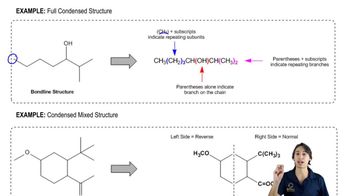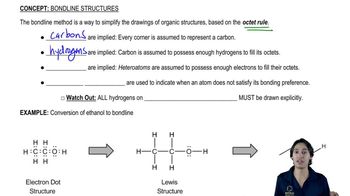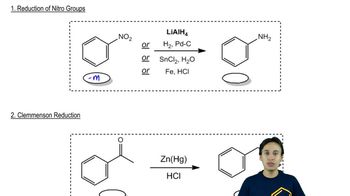Draw the structures of the following compounds.
b. 5-(1,2,2-trimethylpropyl)nonane
 Verified step by step guidance
Verified step by step guidance Verified video answer for a similar problem:
Verified video answer for a similar problem:



 3:43m
3:43mMaster The different parts of an IUPAC name with a bite sized video explanation from Johnny
Start learning